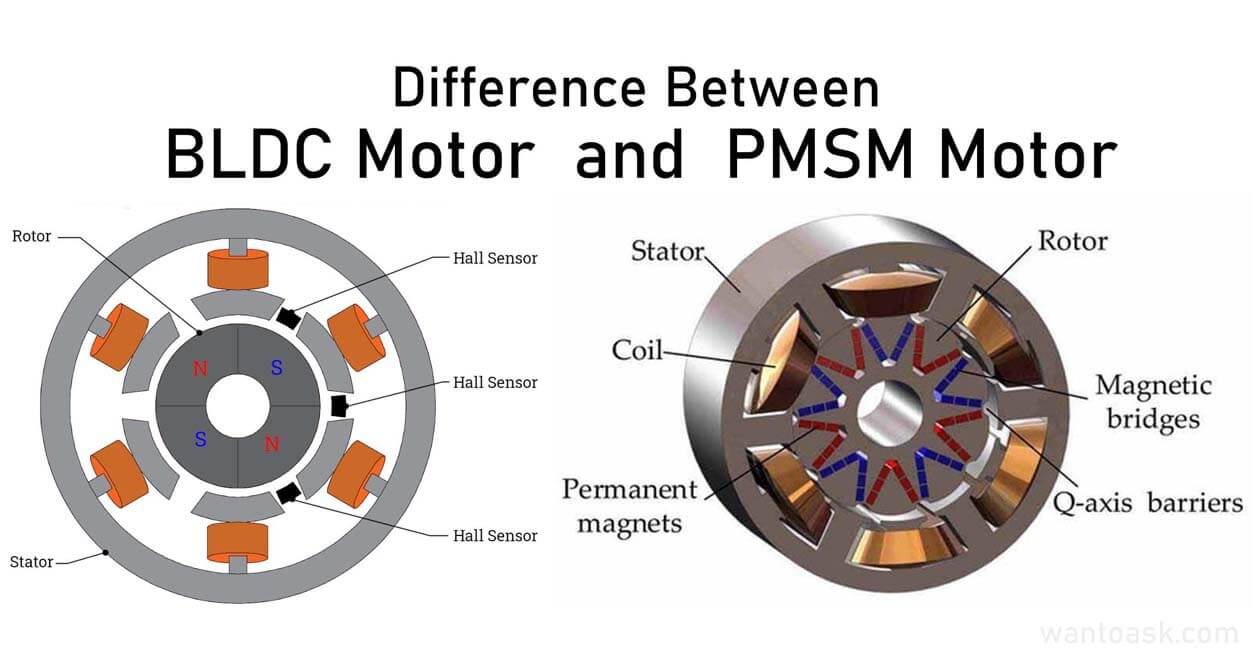
Understanding the Key Differences Between BLDC and PMSM Motors:
Brushless DC (BLDC) and Permanent Magnet Synchronous Motors (PMSM) are both popular choices for a variety of applications due to their high efficiency, power density, and low maintenance requirements. However, despite their similarities, there are some key differences between these two types of motors that can impact their suitability for specific applications.
Motor Design and Operation:
BLDC Motors:
- Brushed Design: BLDC motors utilize brushes to electronically commutate the motor, meaning they physically switch the direction of the current to control the rotation of the rotor.
- Trapezoidal Back-EMF: The back electromotive force (back-EMF) generated by a BLDC motor is trapezoidal, requiring a trapezoidal current waveform for optimal control.
- Sensor-Based Control: BLDC motors typically require sensors, such as Hall-effect sensors, to determine the rotor's position and control the timing of the commutation.
PMSM Motors:
- Brushless Design: PMSM motors use permanent magnets on the rotor instead of brushes, eliminating the need for physical commutation.
- Sinusoidal Back-EMF: PMSM motors generate a sinusoidal back-EMF, requiring a sinusoidal current waveform for efficient operation.
- Sensorless Control: Due to their sinusoidal back-EMF, PMSM motors can be controlled without sensors, although some applications may utilize them for enhanced performance.
Performance and Applications:
BLDC Motors:
- Lower Cost: BLDC motors are generally less expensive than PMSM motors due to their simpler design and lower material cost.
- High Efficiency: BLDC motors can achieve high efficiency levels, making them ideal for applications requiring energy conservation.
- Wide Speed Range: BLDC motors offer a wide speed range and good torque control, making them suitable for various applications.
- Applications: BLDC motors are commonly used in fans, pumps, blowers, power tools, electric vehicles, and drones.
PMSM Motors:
- Higher Efficiency: PMSM motors offer higher efficiency than BLDC motors, particularly at low speeds and high loads.
- Lower Noise: PMSM motors operate quieter than BLDC motors due to the absence of brushes and their sinusoidal current waveform.
- Increased Torque: PMSM motors offer higher torque density than BLDC motors, making them suitable for applications requiring high power output.
- Applications: PMSM motors are widely used in electric vehicles, industrial automation, robotics, wind turbines, and high-performance appliances.
Choosing the Right Motor:
The choice between a BLDC and PMSM motor depends on the specific application's requirements. Here are some key factors to consider:
- Performance: BLDC motors are a good choice for applications requiring high efficiency, wide speed range, and good torque control. PMSM motors are preferred where higher efficiency, lower noise, and higher torque density are critical.
- Cost: BLDC motors are generally more cost-effective than PMSM motors.
- Control complexity: BLDC motors require sensor-based control, while PMSM motors can operate with or without sensors.
- Application: Consider the specific needs of your application and choose the motor that best fits the performance and cost requirements.
Conclusion:
Both BLDC and PMSM motors offer valuable advantages for various applications. By understanding their key differences in design, operation, and performance, you can make an informed decision and choose the best motor for your specific needs.